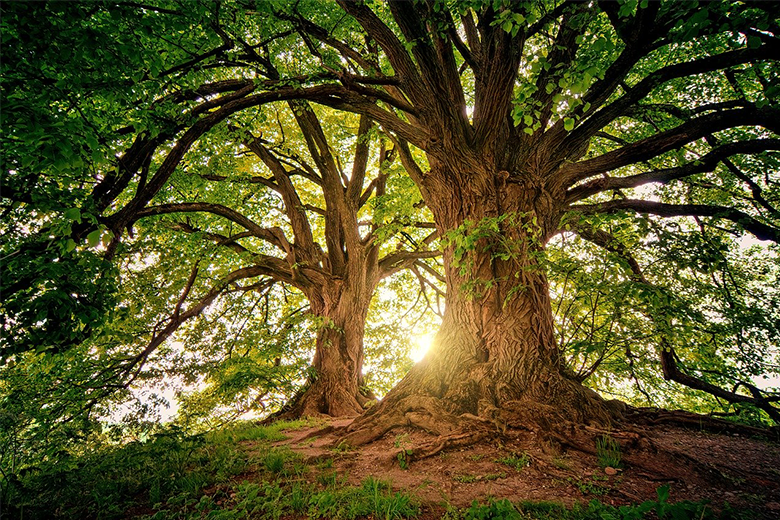Recent evidence says that trees can communicate with each other. Suzanne Simard’s research shows that below the earth there are vast networks of roots working with fungi to move water, carbon, and nutrients among trees of all species. These complex, symbiotic networks, also known as Wood-Wide Web or mycorrhizal networks, mimic human neural and social networks. This network even has mother trees or hub trees, managing information flow, helping younger seedlings and passing wisdom from generation to generation.
Peter Wohlleben, a German forester and author, also researched in this area, proving that not only through the soil can trees communicate, but through sounds and air. It has been proved that some plants may emit and detect sounds to communicate, being the most emitted noise in particular, a crackling one in the roots at a frequency inaudible to humans. In communicating by air, some trees may emit a distress signal in the form of some kind of gas, like ethylene for the acacia trees, to inform other trees about some danger, for instance an animal eating from its leaves.
Suzanne believes that trees speak a language we can learn. But, for now at least, there isn’t much scientific evidence to fully understand this network, nor to learn from the Grandmother Willow... I hope that in the future we can be like the natives in Avatar, who are able to connect with its trees.
Please, if you liked this short essay and want to know more about the Wood-Wide Web, here’s a more extensive link about it:
Do Trees Talk to Each Other? by Richard Grant, SMITHSONIAN, https://www.smithsonianmag.com/science-nature/the-whispering-trees-180968084/
Photograph by @jplenio
